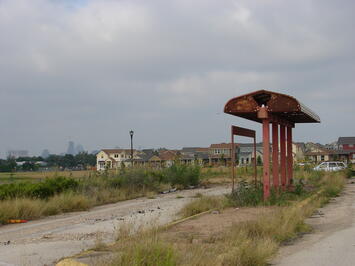
Just a quick note on an encouraging article by James Rodriguez of Business Insider. Rodriguez reports a significant reduction in house prices in Austin, Texas, due to building a large number of single-family homes and apartments. I was unable to discern whether the article dealt with the Austin market (the metropolitan area) or the city (which is a housing submarket). Nor could I tell if his insightful comparison to San Francisco was the housing market (metro) or the city submarket. So, I checked the Census Bureau recent metro data on building permits for 2021 through August of 2024.
In total, there were around 160,000 building permits over the period in metro Austin, of which approximately 80,000 were single family (detached). Most of the other 80,000 were apartments. By comparison, metro San Francisco had about 36,000 building permits over the same period, of which 13,000 were single family houses, and the balance of 23,000 were largely apartments.
Rodriguez mused: “I'd already moved out of Texas by that point, but I worried from afar that my hometown would meet the same fate as San Francisco, the poster child of the housing shortage and all its associated woes. I feared that Austin would become known as a playground for the rich, a city where displacement and mind-boggling home prices marred the natural beauty that once made it such a draw. In my hand-wringing, though, I'd overlooked one crucial detail: Texas is better at building homes than almost anywhere else in the country.”
Bingo!
There are differences between Austin (and Texas) and San Francisco that, if not changed will continue to make it possible to build in Austin (and Texas) and nearly impossible in San Francisco (and California). Unincorporated county territory in Texas is unzoned. That means that, barring environmental difficulties, developers and builders can build. By contrast, in the San Francisco metro, and virtually all of California, draconian state and local regulations make it very difficult to build on greenfield sites, where land prices would be much lower if the market were permitted to operate.
The result is that in Austin, builders can pencil out single family developments, on which they can make commercial returns and house families and other households. It means, in California, and especially the four coastal major metros (Los Angeles, San Francisco, San Diego and San Jose), when the penciling out is done, the house is far too expensive for middle class buyers, and to make them affordable would make it impossible for a commercial return to be made. The difference in price, by the way, is principally in the cost of finished land (land with infrastructure for building), not construction costs.
It is no surprise that hundreds of thousands of people are moving away from California to more affordable areas, such as Texas, Florida, Arizona, Oklahoma and Alabama (yes, Oklahoma and Alabama) and manage to solve the housing crisis on their own.
Wendell Cox is principal of Demographia, an international public policy firm located in the St. Louis metropolitan area. He is a Senior Fellow with the Frontier Centre for Public Policy in Winnipeg and a member of the Advisory Board of the Center for Demographics and Policy at Chapman University in Orange, California. He has served as a visiting professor at the Conservatoire National des Arts et Metiers in Paris. His principal interests are economics, poverty alleviation, demographics, urban policy and transport. He is co-author of the annual Demographia International Housing Affordability Survey and author of Demographia World Urban Areas.
Mayor Tom Bradley appointed him to three terms on the Los Angeles County Transportation Commission (1977-1985) and Speaker of the House Newt Gingrich appointed him to the Amtrak Reform Council, to complete the unexpired term of New Jersey Governor Christine Todd Whitman (1999-2002). He is author of War on the Dream: How Anti-Sprawl Policy Threatens the Quality of Life and Toward More Prosperous Cities: A Framing Essay on Urban Areas, Transport, Planning and the Dimensions of Sustainability.
Photo: “Arriving: suburbia. Departed: airport.” A former airfield in Austin, Texas is being redeveloped into a multi-use community with both single and multi-family housing. By Matthew Rutledge via Flickr under CC 2.0 License.












